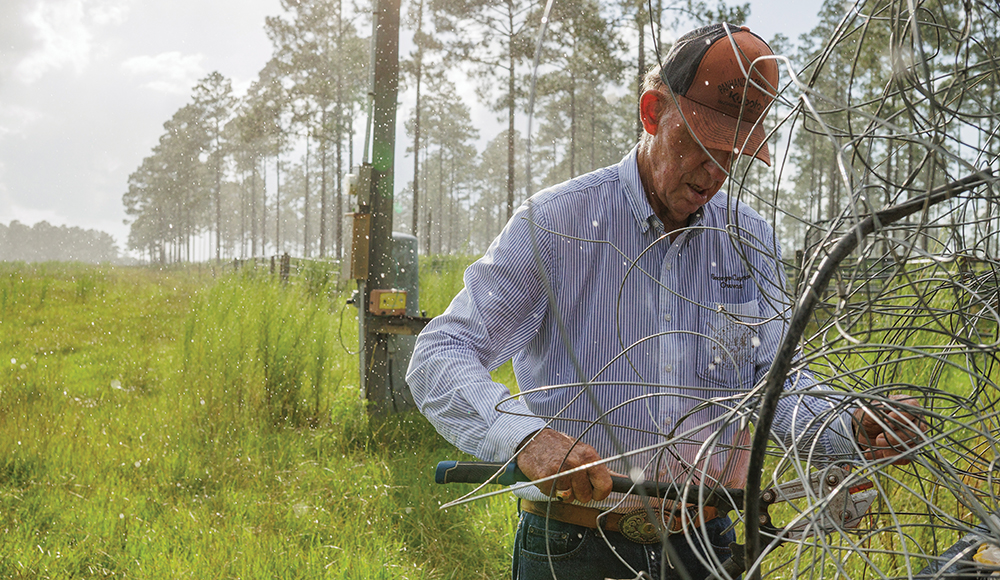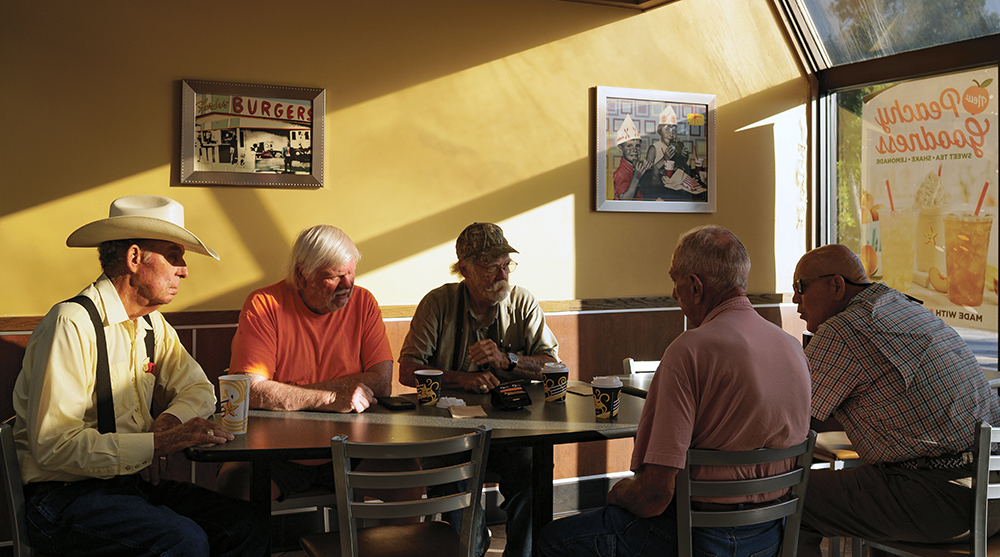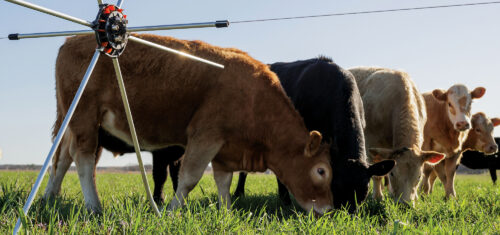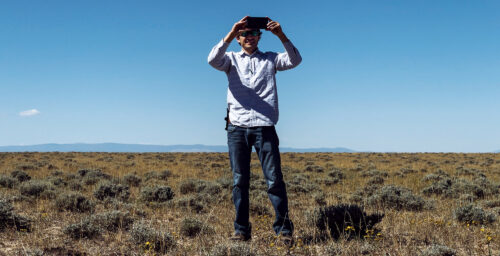Timber, Cattle and A Century of Care
George Owens' innovative silvopasture system has transformed 500 acres in Florida into a thriving balance of productivity, wildlife and generational care.
George Owens manages around 500 acres of combined pasture and pine trees in Chipley, Florida. He practices silvopasture, a sustainable approach that integrates livestock grazing with timber production. His family has stewarded this land since the late 1800s, when his great-great-grandfather homesteaded it.
By the time Owens inherited the farm in 1971, traditional farming methods were no longer economically viable. The expenses associated with row-crop farming — peanuts, cotton, corn and soybeans — such as equipment maintenance and labor costs, were rising faster than revenue. He realized a change was necessary.
“I decided I’d have to do something with the land to give it revenue annually as well as revenue long-term,” Owens says.
His wife, Pat, an accountant, highlighted the urgency of finding a financially sustainable solution to avoid losing parts of their family’s land.
Owens first encountered silvopasture through his work at the Florida Department of Agriculture. Although this integrated practice was well-established in South America, it was virtually unknown in the United States at that time. The concept of earning dual incomes — from both timber and livestock — immediately appealed to the Owens, who established their first silvopasture plot in 1984.
“We were coming back from Lake City, and I told my wife, ‘We can make this work,’” Owens recalls. Despite initial skepticism from local foresters, who doubted the feasibility of combining cattle and trees, and from ranchers, who viewed trees as obstacles, he persisted. He began carefully planning and implementing the silvopasture model on his land.

Building a balanced system
Owens experimented extensively to identify the most effective configuration for his silvopasture system. Ultimately, he adopted a “4 x 8 x 40” planting arrangement — double rows 4 feet apart, planted with pine trees spaced 8 feet apart, with 40-foot forage alleys between the pairs of tree rows for grazing. This spacing allowed sufficient sunlight to sustain healthy grass growth, which is crucial for cattle nutrition.
“Soil health is a big issue in silvopasture,” Owens says. He implemented a rotational grazing system to ensure pasture health, allowing grasses to fully regenerate between grazing cycles. His practice involves removing approximately half the available forage during grazing rotations, thus protecting soil and plant health.
He also introduced clover and ryegrass to diversify and enhance the quality of pasture forage. This inclusion improved livestock nutrition and provided essential habitat for various wildlife species.
“It’s very, very optimal for all kinds of wildlife,” he says. Owens regularly observes increased wildlife populations, including deer, quail and diverse bird species, which thrive in the rich habitat created by his management practices.
Adopting silvopasture significantly stabilized and boosted the economic prospects of his farm. Combining timber and cattle production has diversified income sources, reducing overall financial risk.
Owens explains the advantage of the dual-market approach. “When timber prices are high, cattle prices are usually low and vice versa. This system balances that out.”
Efficient timber harvesting practices on the farm add another layer of economic benefit. Because silvopasture management reduces soil disruption and facilitates easy access, harvesting timber is straightforward and cost-effective. Owens compares harvesting timber on his farm to “logging in a state park,” with minimal impact on the land.
The presence of mature, managed trees significantly enhances the property’s market value.
“Land with trees for shade or a home site is probably worth 30% more than open bare land,” he says.

Preparing for the next generation
Owens’ innovative approach has turned his farm into a hub of learning and collaboration. Agricultural researchers, students and ranchers interested in silvopasture frequently visit his operation. His farm has become an important site for practical demonstrations and research conducted by universities such as Auburn and the University of Florida.
Owens actively shares his insights and experiences, offering guidance to those considering silvopasture. He advises newcomers to start cautiously and grow incrementally.
“If you’re going to try this, start small. Do 10 acres, do 30 acres — whatever you want. But you’ve got to be willing to think differently.”
Initially, the agricultural community met Owens’ innovative ideas with resistance and skepticism. However, attitudes have gradually shifted over the decades as the success and practicality of his approach became evident.
Owens notes this significant change. “There’s a tremendous difference in the attitude of the communities. We’ve got a lot more younger people thinking outside the box.”
The long-term sustainability and continuity of his operation is a priority for Owens and his family.
“This land is in a succession plan — I’ve deeded it to my children. They’ll be the generation farming this place,” he explains.
This careful planning ensures that Owens’ family legacy will continue, with future generations benefiting from his diligent stewardship. By integrating sustainable practices, economic resilience and community engagement, he has created a lasting model for others to follow.
Looking back, Owens acknowledges the many lessons learned throughout his journey in silvopasture. The initial trials and skepticism helped him become more innovative and persistent.
“Everything was a challenge,” he recalls, emphasizing the importance of patience and adaptability.
One of Owens’ hard-won lessons is the unpredictability of land values and the importance of investment foresight. He says he wishes he had acquired more land earlier, given how dramatically values have increased over time.
“If I knew in 1971 what I know today, I’d have bought more land.”



Comment